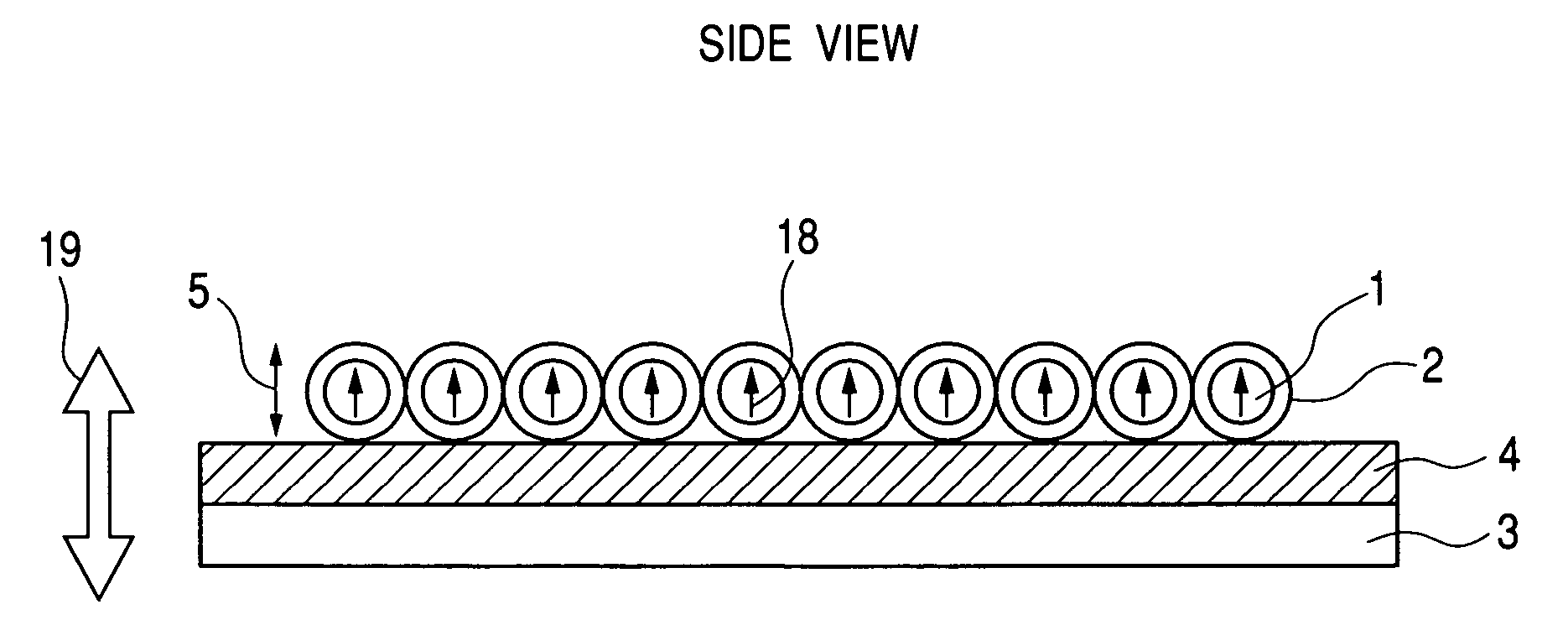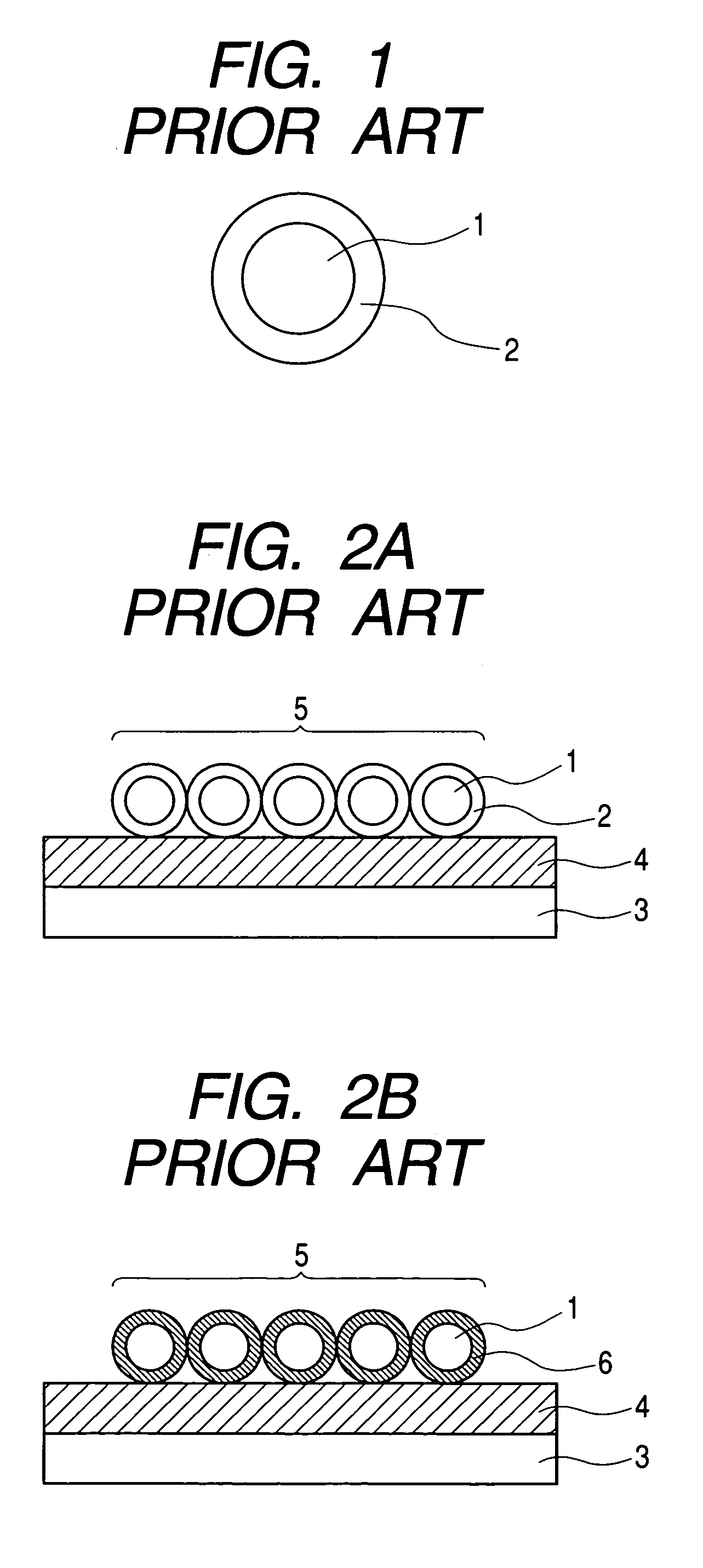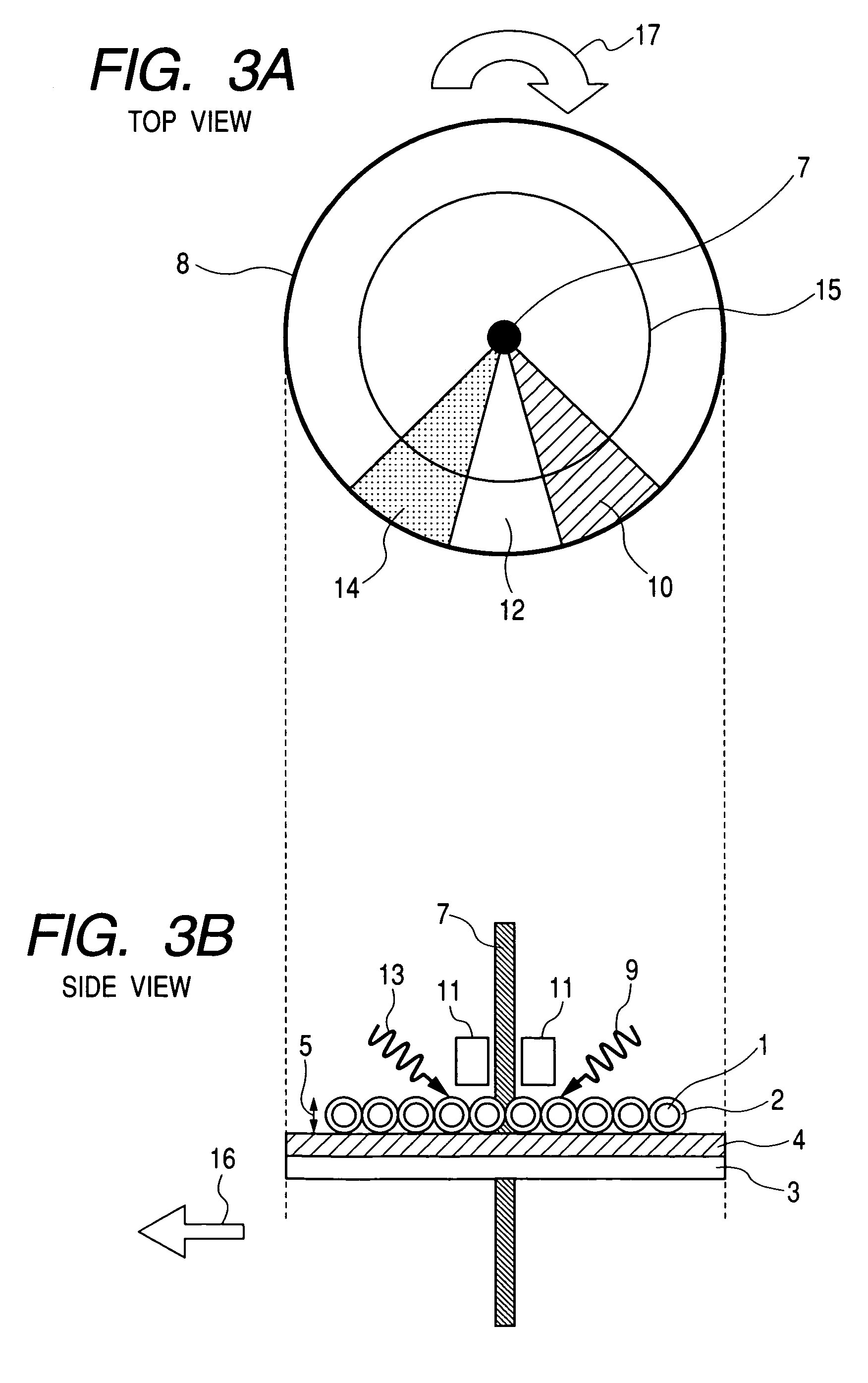Method for producing nanoparticle layer having uniform easy axis of magnetization, magnetic recording medium having such layer, its production method, and its production apparatus
a nanoparticle layer and easy magnetization technology, applied in the field of magnetic recording mediums, thermomagnetic or magnetooptical recording mediums, can solve the problems of difficult control of grain size dispersion, limited grain size dispersion, and thermal instability of magnetic recording layers, and achieve excellent magnetic properties and improved nanoparticle layer flatness.
- Summary
- Abstract
- Description
- Claims
- Application Information
AI Technical Summary
Benefits of technology
Problems solved by technology
Method used
Image
Examples
example 1
[0041]Referring to FIGS. 5A & 5B, Spherical magnetic nanoparticles having a particle dispersion standard deviation degree of up to 10% and a diameter in the range of 1 to 20 nm were chemically synthesized, and the nanoparticles were classified by size in a centrifuge such that each class had a diameter dispersion standard deviation of up to 5%. In the thus produced colloid solution of the nanoparticles, nanoparticles comprising a magnetic metal element surrounded by a coating of an organic compound were dispersed as colloid. Next, the colloid solution of the nanoparticles as described above was dropped onto a soft magnetic layer which had been deposited on a glass substrate by sputtering, and the substrate was rotated for spin coating of the colloid solution to obtain a monolayer film of the nanoparticles which was then subjected to a prebaking at 80° C. for 5 minutes. The substrate having the thus formed nanoparticle layer thereon was rotated such that an arbitrary region of the na...
example 2
[0042]A monolayer film of the nanoparticle was formed by Langmuir-Blodgett method as shown in FIG. 8A-8C instead of the spin coating used in Example 1. The substrate having the thus formed nanoparticle layer thereon was rotated such that an arbitrary region of the nanoparticle layer was irradiated with an infrared beam having a wavelength of 800 nm, and a magnetic field in the direction perpendicular to the substrate surface was, applied to this region at the very moment when this region passed between a pair of coils having magnetic poles arranged on opposite sides of the substrate, and this region was further irradiated with an ultraviolet beam having a wavelength of 200 nm immediately after passing between the coils. A perpendicular magnetic recording medium having a nanoparticle layer wherein the easy axis of magnetization had been oriented at a direction perpendicular to the in-plane direction of the substrate was thereby produced.
example 3
[0043]To the colloid solution of nanoparticles used in Example 1 was added a crosslinking agent represented by the general formula (1):
[0044]
at an amount of 20% by weight of the colloid. The colloid solution having the crosslinking agent added thereto was dropped onto the surface of clean water to form a LB monolayer film of nanoparticles by Langmuir-Blodgett method. This LB monolayer film was transferred onto the substrate. When this LB monolayer film was observed under SEM, the resulting array of nanoparticles substantially had closest packed structure.
[0045]The substrate having the thus formed nanoparticle layer thereon was rotated such that an arbitrary region of the nanoparticle layer was irradiated with an infrared beam having a wavelength of 800 nm, and a magnetic field in the direction perpendicular to the substrate surface was applied to this region at the very moment when this region passed between a pair of coils having magnetic poles arranged on opposite sides of the sub...
PUM
| Property | Measurement | Unit |
|---|---|---|
| particle size | aaaaa | aaaaa |
| particle size | aaaaa | aaaaa |
| size | aaaaa | aaaaa |
Abstract
Description
Claims
Application Information
 Login to View More
Login to View More - R&D
- Intellectual Property
- Life Sciences
- Materials
- Tech Scout
- Unparalleled Data Quality
- Higher Quality Content
- 60% Fewer Hallucinations
Browse by: Latest US Patents, China's latest patents, Technical Efficacy Thesaurus, Application Domain, Technology Topic, Popular Technical Reports.
© 2025 PatSnap. All rights reserved.Legal|Privacy policy|Modern Slavery Act Transparency Statement|Sitemap|About US| Contact US: help@patsnap.com



